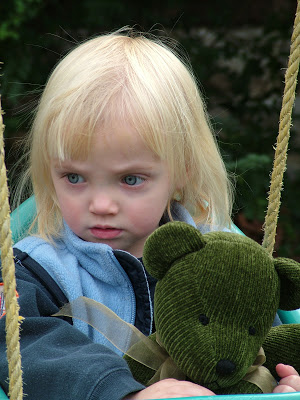 Every family faces difficult discussions. Among the most difficult: separation and divorce, abuse, disasters, illness, death, sex, and adoption. My training in child development, family therapy, and parent-coaching has taught me the importance of honest, informed, and proactive parent-child communication. My trial-by-error training as a parent teaches me to be prepared for the many unscripted, sometimes uncomfortable, yet healing conversations with kids…and to trust in our ability to handle the tough topics. Read my last post for a poignant example of how I talked about some tough stuff with my son.
Every family faces difficult discussions. Among the most difficult: separation and divorce, abuse, disasters, illness, death, sex, and adoption. My training in child development, family therapy, and parent-coaching has taught me the importance of honest, informed, and proactive parent-child communication. My trial-by-error training as a parent teaches me to be prepared for the many unscripted, sometimes uncomfortable, yet healing conversations with kids…and to trust in our ability to handle the tough topics. Read my last post for a poignant example of how I talked about some tough stuff with my son. Read on to learn ten tips for talking about tough stuff with your kids…
Many families that consult family therapists, like myself, are often seeking to learn how best to communicate respectfully, honestly, and open-mindedly. Learning to lecture less and listen more is hard as a parent, but essential if you wish for your children to hear you. When you are able to speak the truth about yourself, accepting even the hard truths (apologizing when necessary), authentic self-expression flows. Secrets have a nasty way of suffocating the soil in which we hope to grow our children. Staying involved and connected in your children’s lives, knowing their friends, teachers, classroom and outside activities are all keys to unlocking conversations about their lives. Making time at bedtime, or over breakfast, or while driving between activities, to shut out the noise, get quiet, and listen to what your children have to say often creates sacred space for spontaneous self-expression.
I work through the following steps with parents who consult with me about having difficult discussions with
their kids:
1. Take time to reflect on your feelings, fears, values/beliefs, and hopes for what you want to teach your children. Rehearse what you’d like to say about a particular topic.
2. Practice listening more and lecturing less in discussions. Resist the urge to share your opinion, unsolicited advice, or experience before your child has had an opportunity to ask the question or share the insight they want to share with you. Once your child approaches adolescence, it becomes increasingly important to ask, “Would you like to know my opinion or hear my advice?”
3. Trust your and your kids’ ability, resilience, and inner wisdom to deal with tough questions and life’s tough times. Model the emotional, social, moral, and intellectual courage to talk about the tough stuff. Your children will learn that you are approachable and not afraid to ask the tough questions. Together you can become brave enough to seek the answers to some of life’s mysteries.
4. Start early and stay connected with and involved in your kids’ lives. Don’t assume what they know or wait for your children to initiate discussions, ask.
5. Seek out support groups, friendships, counselors, parenting coaches, or educational resources for guidance and support in difficult times and for difficult conversations, if needed.
6. Create safety and safe times to talk. It’s okay to take a deep breath and some time before responding. Just make sure to get back to your child in a timely manner with your response.
7. Be patient and prepared to talk about difficult things again and again, especially with young children. Be curious about the question behind their questions. For example, perhaps they ask repeatedly what will happen after the divorce because they want to know they will always be taken care of and loved. Or perhaps they just want to know in whose house their guinea pig will live.
8. Continue the conversation through play/art/music and everyday teachable moments. Play and the creative arts are powerful ways for a child to express and process what they are learning, observing, and/or struggling with in life. Play and art offer tools of self-expression that are not reliant on a expansive vocabulary or the kind of cognition more commonly associated with adulthood.
9. Answer your children’s questions simply and honestly. Stick to the facts—reassuring them of their safety and security. Be sensitive to their feelings and boundaries—reassuring them of your strength and approachability.
10. Take action after difficult discussions—write letters, reach out to family and community members, get more information, volunteer for a worthwhile cause related to the topic, perform a meaningful ritual. Offer hope through thoughtful, value-directed action.
We’d love to hear your advice, experience, or questions pertaining to talking about tough stuff with your own kids. Post a comment!
 When I was just entering 1st grade, my father’s job took him to Switzerland. We would all live in Zurich for a year, and my sister and I would go to school there. The company had found us an apartment, but it wasn’t yet ready for us when we arrived, and we spent a week or two living in a hill-top hotel while my father began work. The school I was to attend was just for grades one and two; my sister, in third grade, was going somewhere else.
When I was just entering 1st grade, my father’s job took him to Switzerland. We would all live in Zurich for a year, and my sister and I would go to school there. The company had found us an apartment, but it wasn’t yet ready for us when we arrived, and we spent a week or two living in a hill-top hotel while my father began work. The school I was to attend was just for grades one and two; my sister, in third grade, was going somewhere else. When I was just entering 1st grade, my father’s job took him to Switzerland. We would all live in Zurich for a year, and my sister and I would go to school there. The company had found us an apartment, but it wasn’t yet ready for us when we arrived, and we spent a week or two living in a hill-top hotel while my father began work. The school I was to attend was just for grades one and two; my sister, in third grade, was going somewhere else.
When I was just entering 1st grade, my father’s job took him to Switzerland. We would all live in Zurich for a year, and my sister and I would go to school there. The company had found us an apartment, but it wasn’t yet ready for us when we arrived, and we spent a week or two living in a hill-top hotel while my father began work. The school I was to attend was just for grades one and two; my sister, in third grade, was going somewhere else.









